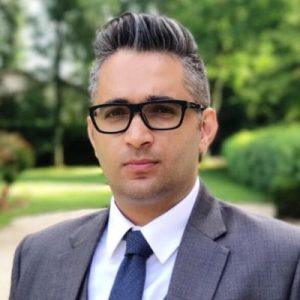
By Avtar Ram Singh, {grow} Contributing Columnist
What does good marketing look like? How do we know that a marketing campaign has been a success? How do we determine that a marketing experiment that yielded a certain result is worth repeating again?
Benchmarks, of course. I can see you nodding, but … do I also hear a slight groan?
Two of the most painful questions for marketers are, “How do we know this is going to work?” and “What’s our benchmark for this?”
Indisputably, benchmarking is important. It helps establish a minimum threshold that a business must meet in order to be deemed optimal, or satisfactory. In a number of cases in the marketing world, benchmarks are also the prime reason for infuriating delays in projects, and in some cases, flat-out cancellations.
In the hunt for benchmarks, historical performance of campaigns is dug up (which shouldn’t be relevant if it’s a new format / creative being tried) or, independent studies and reports are referenced for benchmarks which opens up another can of worms.
Today I want to provide some new insights on marketing benchmarks.
The Never-Ending Quest for Benchmarks
Think of the last time you went to Google to hunt for some measurement benchmarks. In fact, let’s play out a scenario. You’re about to launch an e-mail campaign for a client, you’ve decided to try out a few different subject lines and first thing, you’re asked for benchmarks.
So you dig this bad boy up from eMarketer:

It’s got the basic metrics in there that every e-mail marketer tracks on an on-going basis. When you show this to your client, here’s the kind of questions you can expect:
- Are these for the automotive industry? We need them for the automotive industry?
- This is for the United States — can we get data just for Washington? Actually, how about just for Seattle?
- Is this for a target audience that has similar interests to ours?
- Can we get data that’s not two years old?
- Is this based on opt-in or cold e-mail send outs?
- Can we see these by subject line length?
- This is for the Epsilon platform, can we find some for SendGrid?
… and it continues.
If by some miracle you do find e-mail open rate benchmarks for the Seattle automotive industry, you’ll be asked to weed out the luxury car segment because the client operates in the economy segment. If by some miracle you’re able to further segment it, you’ll end up with three companies that do e-mail marketing, two of which send out an e-mail once in six months.
How useful is that benchmark? Is there even a point?
Looking Inward for Benchmarks
The obvious next step then, is to look inward for benchmarks. Create your own, operate based on what you know to be true, race against yourself, and all that jazz.
I’ve found this to be effective in most cases. If you’re keeping a track of the performance of your marketing campaigns, you’d likely have information like this available to you:
- Tier 1 High Performance Campaigns: 15x and above ROAS (Return on Advertising Spend)
- Tier 2 Above Average Performance Campaigns: 8x – 15x ROAS
- Tier 3 Average Performance Campaigns: 4x – 7x ROAS
- Tier 4 Poor Performance Campaigns: Negative to 3x ROAS
So when you run a marketing campaign, and you spend $20,000 on it and generate $220,000 in revenue, that’s 11x ROAS, which means it’s an above average performance campaign. Success! In these situations, you’d likely have to do an annual review where you try and figure out how much your competitors are spending on marketing, and what their ROAS is looking like, to ensure that your benchmarks stay competitive.
It’s not an exercise you’d do every quarter, primarily due to how difficult it would be to obtain that data. In fact, even once a year, you’ll have to be pretty creative to get accurate figures around competitor spend and ROAS.
Horses for Courses in the Benchmark World
However, even when you have established benchmarks, they can often be unfair to certain campaigns. Not every marketing activity is tied back to revenue, nor should it be. Sometimes, campaigns are run to re-enforce brand values, sometimes they’re run just for customer delight.
Sure, those campaigns indirectly contribute to eventual sales and revenue, but it can be tough to explicitly tie back such a campaign to direct revenue.
But beyond those, sometimes the social media marketing team runs campaigns with the sole objective of click-throughs. The digital marketing team for the same campaign is looking at bounce rates and time spent on landing page. The growth team is looking at sign-ups / conversions via the same landing page.
So everyone comes up with their own benchmarks. Usually, ROAS can be the unifying king-of-all benchmarks, because… balance sheets.
Sometimes campaigns are run with the objective of lead-generation, website sessions, video views and so on – which ends up in marketing teams keeping a stack of benchmarks for… everything. Some marketing teams pride themselves on this, the fact that everything is measurable, everything is benchmarked, everything can immediately be assessed as a success or failure.
I find it unsettling, and blame it for stifling the creative side of marketing.
Finding Comfort with No Benchmarks
I’ve always believed that the magic in marketing happens in the grey area, and not in the white or black. It’s when we free ourselves from the shackles of rules and must-haves and allow ourselves to chase inspiration rather than be led by principles on a piece of paper, that we discover the golden eggs in marketing.
The well-informed and well-intentioned marketing teams not only know to ask questions like, “Will this beat the benchmark?” … but also know when not to ask them.
If it’s never been done before, there’s no benchmark for it. If it’s a completely new and original idea, there’s no benchmark for it.
Find comfort in that.
 Avtar Ram Singh is the Head of Strategy at FALCON Agency, a performance-led, business results oriented marketing agency that operates in South East Asia. He’s built marketing strategies and performance frameworks for brands on global and regional levels, across a variety of industries. You can find him on LinkedIn, and Twitter.
Avtar Ram Singh is the Head of Strategy at FALCON Agency, a performance-led, business results oriented marketing agency that operates in South East Asia. He’s built marketing strategies and performance frameworks for brands on global and regional levels, across a variety of industries. You can find him on LinkedIn, and Twitter.


